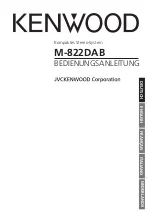
SECTION 6 –
ELECTRICAL
6-4
Further Information
See the manufacturer’s operation, care and
maintenance information in your InfoCase.
Charging Section
The converter charges house batteries while
120-volt external power is connected. The
converter will automatically “sense” the
condition of the battery. If it is below “full
charge”, the Charging Section will start charging
the batteries.
If the house batteries have been extremely
discharged, they will accept charge at a relatively
high amperage rate. If they are only slightly
discharged, they will charge at a lower amperage
rate. The rate of charge will decrease as the
batteries reach “full charge”, then will continue
“trickle” charging at a very low amperage rate. If
your battery does not charge as described above,
it is possible the battery is defective.
Thermal Overload
A thermal overload device inside the
converter will shut down the converter if it
becomes overheated. This can result from
operating above its maximum limit for an
extended period of time or by obstruction of
ventilation to unit.
NOTE: The 12-volt loads will automatically be
powered by the house battery power in
this event.
The thermal overload will reset itself after a
period of time, and the lights and motors will
again resume operation from the power converter
section. If the breaker trips again shortly after
reset, take immediate steps to correct the cause of
overheating. A portion of the house 12-volt load
(lights or motors or both) should be turned off to
reduce total load. Also, inspect the power
converter to make sure ventilation is not
obstructed.
CIRCUIT BREAKERS – HOUSE
120-VOLT AC
The breaker panel protects all 120-volt
components in the motor home from either an
overload on the circuit or a short in the wiring or
component itself. When an overload or short
develops, the breaker will open preventing
damage to the system.
Shut off the equipment (example: roof air
conditioner) and allow a brief cooling period.
Then reset the breaker by moving the switch to
“Off” and back to “On”. If the breaker is
continually tripped and no overload is evident,
have the system checked for a short in the wiring
or the appliances.
The breaker panels are located behind a door
or pull-off panel on a lower cabinet face in either
the galley or lounge area or beneath the rear bed,
depending on model.
NOTE: Breakers are labeled on panel.
Arrangement may vary according to
appliance and equipment options.
ELECTRICAL OUTLETS –
HOUSE 120-VOLT AC
A number of standard household electrical
outlets are provided throughout the coach for
connecting small appliances such as televisions,
radios, toasters, etc.
-Typical View
















































